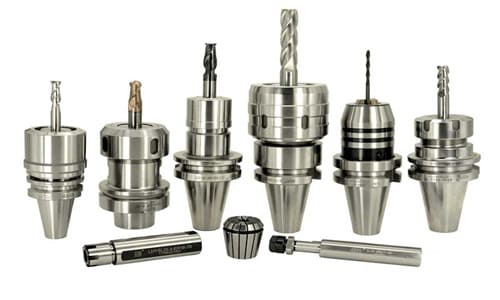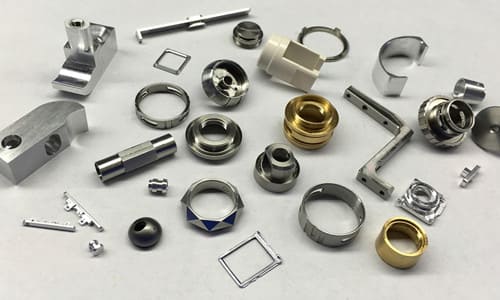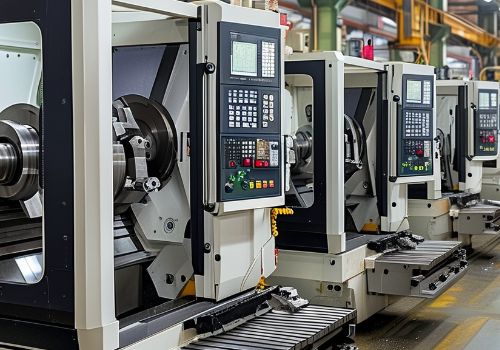The tool holder is the key interface between the cutting tool and the machine tool spindle, and the failure of the tool holder can cause the tool holder to fail to function, resulting in shortened tool life and unreliable cutting process.
Typical tool holder failures take the following forms:
– Chips wrap around the tool holder. The tool holder wears due to friction between the tool holder, workpiece and chips.
– Intermittent cutting forces cause surface fatigue of the tool holder.
– Deformation of the tool holder due to cutting forces.
– Cutting heat and cutting temperature cause a phase change in the material structure of the tool holder.
– Oxidation and corrosion of the tool holder.
– Wear of spare parts, accessories and connecting surfaces.
So, how do you know when to replace the tool holder?
Check machine tool spindle wear and automatic tool changer alignment
Worn spindles can cause runout problems, affecting tool holder accuracy, reducing achievable workpiece quality and machining efficiency. The quality of a machine tool spindle can be assessed, for example by checking its T.I.R. (radial runout).
Maintaining ATC (Automatic Tool Changer) alignment is critical. If the ATC does not hold the tool holder well, damage to the spindle and tool holder can occur, and tool performance and tool life can be significantly reduced.
Tool holder Wear Assessment
A worn tool holder will not provide good accuracy and will wear the tool quickly, also resulting in poor machined surface finish and possibly even damage to the machine tool spindle.
Cone wear/fretting wear
Check the positioning cone for wear or damage. Any problem with the tapered surface will directly affect the machining accuracy, and if there is any defect in the tapered surface, the tool holder should be replaced.
If there are obvious marks on the cone surface, fretting wear may have occurred. When two rigid parts (tool holder and spindle) rub against each other, fretting wear occurs. Fretting wear is caused by poor fit between the taper surface of the tool holder and the spindle, and the wear will generate vibration and heat. If you see small copper-colored pits or marks on the taper, this means the tool holder is wearing. Fretting wear is often easily mistaken for oxidation, and once significant fretting occurs, the tool holder should be replaced. If the new tool holder fretting quickly, or if the tool holder is stuck in the spindle, it means the spindle needs to be reground.
When the tool holder is inserted into the spindle, the worn taper can cause off-center positioning, which is known as “run-out”. Runout during machining can cause premature tool wear and failure, as well as excessive vibration resulting in poor machined surface roughness that requires additional machining to correct it. Vibration can also cause fatigue heating of the spindle and damage to the spindle bearings. T.I.R. (Radial Runout) is used to measure the axial deformation of the tool in the tool holder assembly, and the life of the tool is reduced by 10% for every 0.02mm of runout.
Bushings and Collets
Bushings have special grooves and patterns that hold the tool firmly, so they wear out faster than collets. Worn bushings cause the tool to fail earlier and should be replaced when the bushing is significantly worn to maintain the accuracy and performance of the tool-holder assembly.
The bushing should be replaced if there is any damage to the OD or ID. The tool rotates in the inner diameter of the bushing, which will cause damage to it, so check the marks in the inner diameter. Once the damage occurs, the bushing cannot effectively clamp the tool holder, which will reduce the clamping force and accuracy.
As a professional CNC machining manufacturer, DO Machining not only produce metal parts, but plastic and wood parts are also available.
Please visit our CAPABILITIES and what PRODUCTS we did.
CNC machining service is the core business of DO Machining, from protptyes to bulk production, our professional 3/4/5 aixs CNC machining centers, CNC turning equipments, CNC turning-milling equipments, CNC grinding machines etc., are operated by well trained manufacturing engineers to meet the demands from global 1000+ customers in 30+ industries.
CNC Machining can be done starting with blanks produced from standard bar stock or one of DO Machining other manufacturing processes.
Contact us to see how we can provide overall value to your CNC machining needs.











